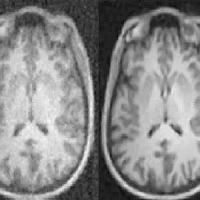A new computational tool that uses artificial intelligence (AI) and machine learning (ML) can be used to screen patients with common retinal diseases such as macular degeneration and diabetic macular oedema. The researchers, from Shiley Eye Institute at UC San Diego Health and University of California San Diego School of Medicine, with colleagues in China, Germany and Texas say the tool has the potential to speed up diagnosis and treatment of these blinding diseases.
Senior author Kang Zhang, MD, PhD, professor of ophthalmology at Shiley Eye Institute and founding director of the Institute for Genomic Medicine at UC San Diego School of Medicine and colleagues used an AI-based convolutional neural network to review more than 200,000 eye scans conducted with optical coherence tomography, which bounces light off the retina to create 2D and 3D representations of tissue.
The researchers used the transfer learning technique, whereby knowledge gained in solving one problem is stored by a computer and applied to different but related problems, which allows the AI system to learn effectively with a much smaller dataset than traditional methods. They then added occlusion testing so the computer identifies the areas in each image of greatest interest and that are used as the basis for its conclusions.
Zhang noted that with occlusion testing, the computer can narrow down where it is looking in an image to arrive at a diagnosis, so that users can figure out why the system got the result it did. “This makes the system more transparent and increases our trust in the diagnosis, he added"
In their study, published in Cell, machine-derived diagnoses of macular degeneration and diabetic macular oedema were compared with diagnoses from five ophthalmologists. The AI system also generated a referral and treatment recommendation not done in previous studies.
With simple training, the authors write, the machine performed similar to a well-trained ophthalmologist, and could generate a decision on whether or not the patient should be referred for treatment within 30 seconds, with more than 95 percent accuracy.
Their study also tested the AI tool on machine analyses of chest x-rays to diagnose pneumonia. The system was able to differentiate between viral and bacterial pneumonia with greater than 90 percent accuracy.
The research team have published their data and tool as open access so that others can further improve, refine and develop its potential.
Watch AI Takes on Disease (video abstract)
Video credit: Kang Zhang et al./Cell
Source: Cell
Image Credit: Daniel Kermany, Guangzhou Medical University and Kang Zhang, UC San Diego Health
Latest Articles
machine learning, Artificial Intelligence, AI, eye diseases
A new computational tool that uses artificial intelligence (AI) and machine learning (ML) can be used to screen patients with common retinal diseases such as macular degeneration and diabetic macular oedema. The researchers, from Shiley Eye Institute at U



























